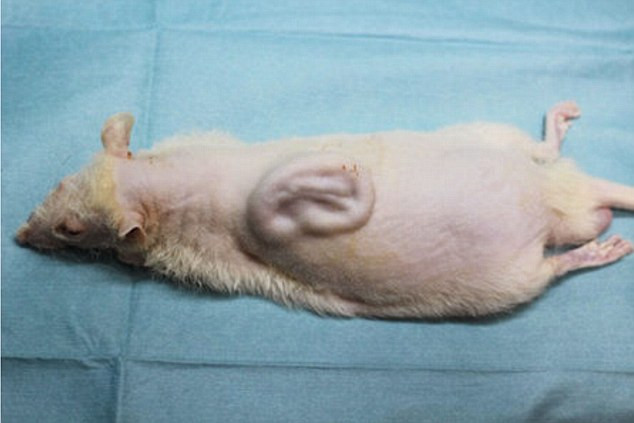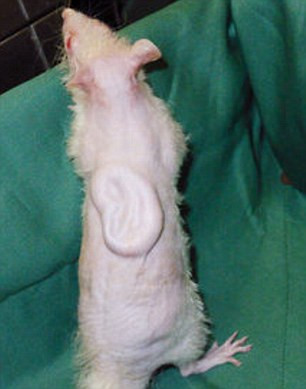Japan: Human ear grown on back of rat using stem cells could be used on patients in five years

Human ear cartilage has been effectively grown on the back of a rat using stem cells, say researchers from Japan. Photographs have been released showing the ear in the centre of the rodent's back, and the scientists claim they could be made 'to order' for patients born without ears.
The Daily Mail reports that scientists from the University of Tokyo and Kyoto University have succeeded in creating the ear cartilage from induced pluripotent stem cells – or iPS cells. They hope that this research would lead to clinical trials within five years. The facial feature was made by first culturing iPS cells into ear-cartilage cells. These were then made into a number of tiny balls, which filled a narrow plastic tube.
The scientists used three of these tubes together to shape the ear, and implant it on the back of a rat. The tubes remained on the rodent for roughly two months, before dissolving and leaving behind the 5cm long human ear.

This is not the first time researchers have created human ears on the back of rats. In July 2013, researchers from the Massachusetts General Hospital in Boston published a study in The Royal Society, using computer modelling and CT imaging to create a human ear that had a good "aesthetic appearance".
The research was also aimed at developing a non-invasive method to change the shape of ears. Initially, they created the outline of human ears with different curvatures and contours. They then implanted the newly developed ear onto the back of a nude rat for 12 weeks. The scientists even took the ear out of the rat afterwards to assess its durability, and to make sure it would not bend or break once attached to a human.
"We've demonstrated the first full-sized adult human ear on the rat model," Thomas Cervantes, lead author of the study, told the BBC.
"We were able to keep the shape of the ear after 12 weeks of growth in the rat. Then we were also able to keep the natural flexibility of the cartilage."
© Copyright IBTimes 2024. All rights reserved.























